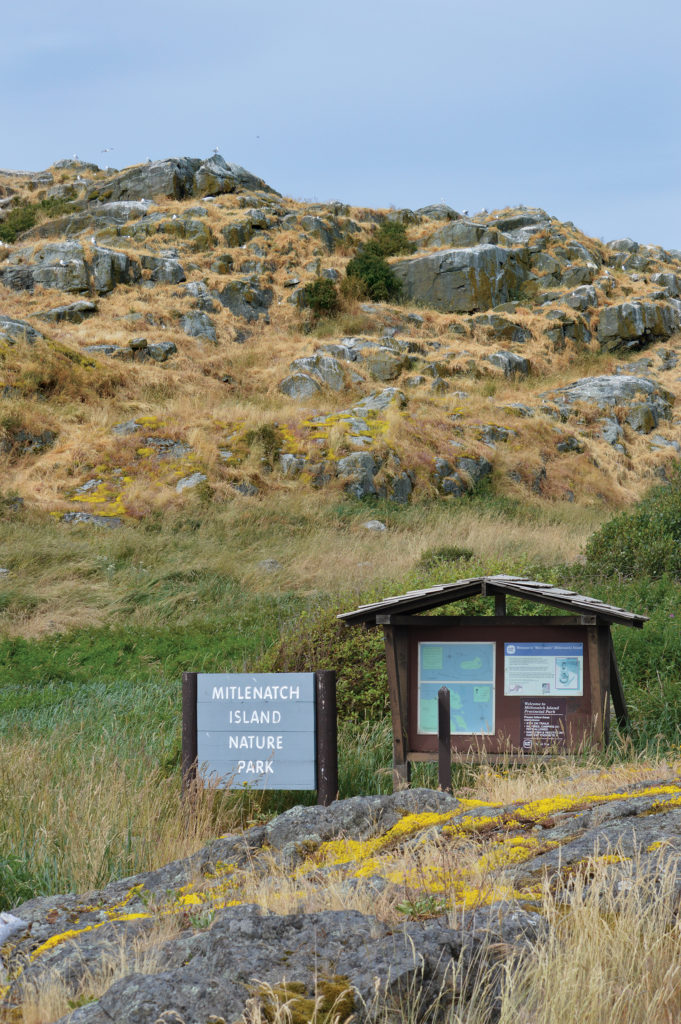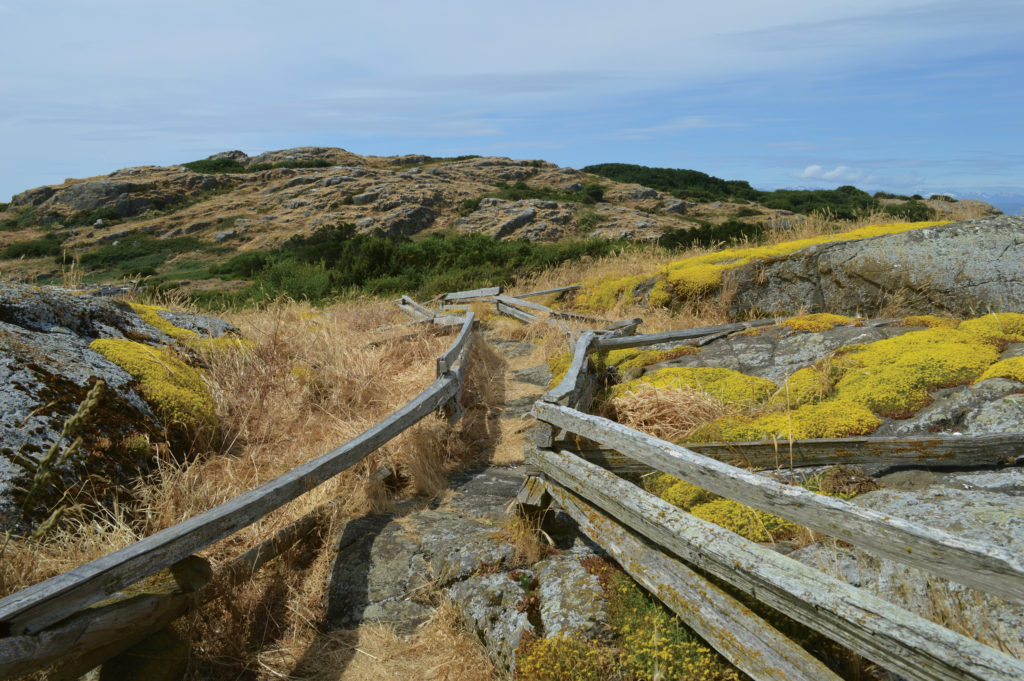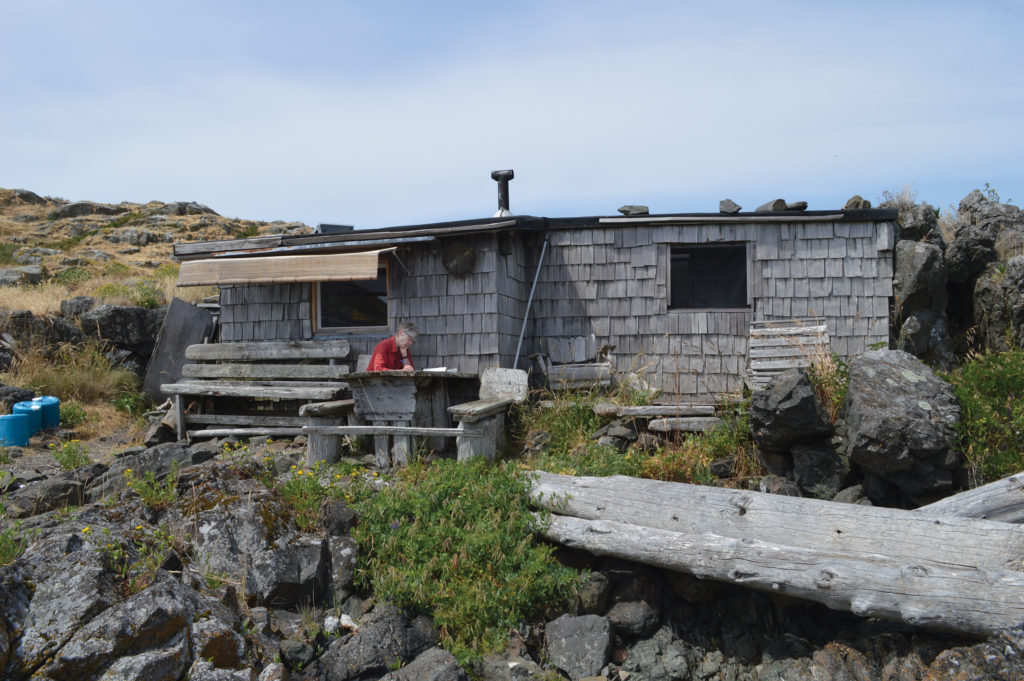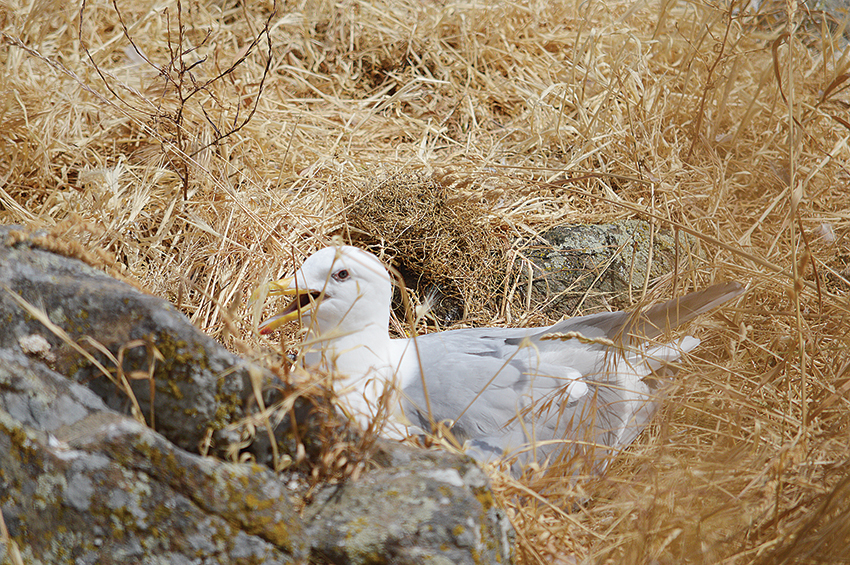A unique place watched over by a group of dedicated volunteers.
With spectacles, white hair and a mid-length white beard, Don Griffiths is not what you’d immediately picture as a guardian.
But the “city guy from Vancouver” is indeed one of the guardians of Mitlenatch Island who spend one week a year roughing it in a rustic hut on the provincial nature reserve as a volunteer park ranger.
The gregarious nature-lover has bullhorned warnings to wayward anglers, encouraged well-meaning day trippers to stay on the trails and even convinced a gun-toting boater who told him he “doesn’t like to go ashore unarmed” to leave his weapon in the boat.
But Griffiths takes it all in stride.
“I think most people want to follow the rules,” Griffiths says.
And there are a number of guidelines visitors to the 155 hectare bird sanctuary are encouraged to follow.
Located in the northern Strait of Georgia, halfway between Vancouver Island and the mainland, Mitlenatch Island is a provincial park nature reserve set up in 1959 to protect colonies of breeding seabirds. It’s a wind-swept rock that’s home to thousands of glaucous-winged gulls, pelagic cormorants, pigeon guillemots, black oystercatchers, ravens, eagles and many other species of birds. It also hosts marine life around the island including river otters and harbour seals throughout the year, and Steller’s and California sea lions from late fall through to summer.
Its name means “calm waters all around” in the Coast Salish language and the island sits in the rain shadow of Vancouver Island’s mountains. It receives less than half the rainfall (75 cm.) Campbell River does and consequently, you can find healthy clumps of cactus on the island.
Mitlenatch is a unique place and looking after it falls on the shoulders of a unique organization. The Mitlenatch Island Stewardship Team (MIST) serves as park interpreters, mild enforcement agents and field research technicians throughout the nesting season (April to September). They are there to ensure that visitor guidelines, set up to preserve the delicate nature of the island, are observed.
MIST volunteers live in a little cabin nestled in the rocks overlooking a small bay on the south side of the island. It’s rustic but comfortable and the setting is spectacular.
“It’s a beautiful place to be, we’re really privileged to be here,” Griffiths says. “Your heart soars to be here.”
MIST volunteers have the opportunity to help protect a natural treasure and the pleasure of learning about a unique ecosystem in a way only living in the same spot for an extended period can bring.
“I think the reason (volunteers) come out here is because we’re interested in and we appreciate the natural world and put some energy into looking after it,” Griffiths said. “It’s a privilege, not a chore.”
Volunteers are required to have some natural knowledge, an ability to communicate and interpret and they need to be somewhat handy and able to live in the outdoors given the living conditions. MIST volunteers fulfill the role park naturalists and interpreters used to before the service fell victim to BC Parks budget cuts.
This is Griffiths’ fourth season on the island and he was lucky enough this year to get an additional stint in the spring participating in a monitoring project. A large part of the volunteers’ work is monitoring and recording plant growth activity throughout the seasons.
A walk along the island’s trails with Griffiths is accompanied by his running commentary on the myriad flowers and plants covering the ground. Many of the clumps of flowers are known almost personally because the volunteers monitor them so closely. Griffiths exclaims with some delight when he comes across a flower that had bloomed since his last visit.
“It’s peaceful,” Griffiths says surveying the island.
“It’s not exactly quiet because of the birds,” he adds with a grin. “It’s definitely a break to come out here and spend a quiet week with my wife. You get attuned to the time of the tide.
“It’s a little bit like camping.”
And while there is lots to do interpreting and monitoring, there is also “time to just sit up at the bird blind.”
The blind is located on the east side of the island. The island is composed of three features, West Hill is the higher side and is off-limits while East Hill is lower but has a trail to a blind that allows you to watch the nesting seagulls. In between is a meadow that is slowly being reclaimed by shore pines. This is a recent development. The island was burned by a fire in the 1950s just before it became BC Parks property.
 Mitlenatch Island was once owned by the Manson family of Cortes Island who raised sheep and cattle on it. They would bring the sheep out in the spring and leave them there all summer. Eventually, a house was built to keep an eye on the sheep and ward off “mutton pickers” or sheep stealers.
Mitlenatch Island was once owned by the Manson family of Cortes Island who raised sheep and cattle on it. They would bring the sheep out in the spring and leave them there all summer. Eventually, a house was built to keep an eye on the sheep and ward off “mutton pickers” or sheep stealers.
In 1959, the BC government bought it from the Manson estate and designated it a provincial nature park.
Up at the bird blind one day in June, the seagulls are sitting on nests on the rocky ground. Crowding them in the nest are one or two chicks demanding food and warmth from their parents. Griffiths can give you a play-by-play commentary about the birds sitting on the nests.
“Until they get quite close they don’t react to the crows at all,” he says in hushed tones. “Some of them with the young chicks are getting a little more aggressive but mostly they tolerate the crows walking in amongst them.”
It’s easy to catch Griffiths’ enthusiasm for the plant and animals of the island. They’re his neighbours, they’re his teachers and they’re his responsibility. He reflects great delight in living amongst them for his one week a year.
If you go to Mitlenatch Island, remember…
Seabird colonies are very sensitive to disturbance. The following “rules” must be observed:
Visitors must stay on designated trails
Pets are not permitted on the island
When approaching the observation blind, KEEP THE PARTY TOGETHER AND MOVE SLOWLY. This will reduce the gulls’ anxiety and allow you to observe their behaviour and “family life” more easily. Remain quiet while in the blind. If the blind is occupied, remain well back on the trail until the blind is vacated.
If you are fishing, stow your rods while in the waters around Mitlenatch. It sits inside a Rockfish Conservation Area. (You can find the roughly square area indicated on charts). Because fin fishing often pulls up rockfish, which do not survive catch and release, fin fishing (including salmon) is also closed in rockfish closure areas.
There are only two spots you can come ashore without disturbing the nesting birds. (There are no docks or buoys). Small boats and dinghies can come into the middle section of either NW or Camp bay.
Secure your boat and make sure it won’t be caught in a rising tide or stuck in a falling one. The welcome signs and start of the trail are visible from the water at the head of both bays.
Check out the information signs, make a note of the visitor guidelines and give yourself at least an hour to explore.
Stop by the volunteers’ cabin located in Camp bay. There are brochures available and a Mitlenatch island Stewardship Team (MIST) volunteer can help answer any of your questions about the island.
If you wish, a volunteer will take you on a nature walk to the bird blind. MIST volunteers are there as wardens throughout the nesting season (April to September).

